
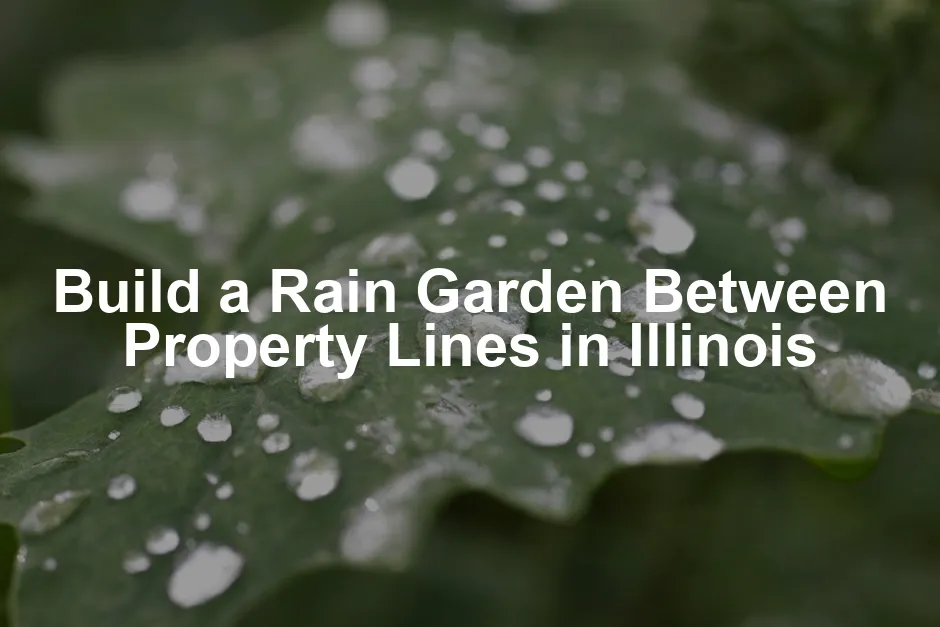
Build a Rain Garden Between Property Lines in Illinois
Introduction
Rain gardens are shallow, landscaped areas designed to capture rainwater runoff. They help filter pollutants and allow water to soak into the ground. Building rain gardens between property lines in Illinois is vital. These gardens not only manage stormwater but also enhance community aesthetics. They create beautiful spaces while benefiting the environment.
Summary and Overview
A rain garden is a specially designed landscape that collects and filters rainwater runoff from surfaces like roofs and driveways. In urban and suburban areas, these gardens play a crucial role in managing stormwater. They help prevent flooding, recharge groundwater, and filter pollutants. Additionally, rain gardens promote biodiversity by providing habitats for various wildlife species. To learn more about enhancing biodiversity in your garden, check out this article on how to enhance biodiversity in your garden for insect support.
The benefits of rain gardens extend beyond the environmental. They can increase property values and foster community engagement. By working together, neighbors can create attractive, functional spaces that contribute to a healthier ecosystem. Rain gardens are more than just pretty landscapes; they are essential tools for sustainable living.

If you’re considering diving deeper into the world of rain gardens, “Native Plants for Rain Gardens: A Practical Guide” is a fantastic resource that will help you select the best plants for your garden while keeping your local ecosystem thriving.
Benefits of Building a Rain Garden
Environmental Benefits
Building a rain garden significantly reduces stormwater runoff. When heavy rains hit, rain gardens capture excess water. This process allows the soil to filter pollutants, improving overall water quality. For effective stormwater management, consider this guide on how to design a rain garden for effective stormwater management.
These gardens also support local ecosystems. They provide habitats for various birds, butterflies, and beneficial insects. A study by the Illinois Department of Natural Resources indicates that rain gardens can lower flooding by up to 30%. This reduction helps protect local waterways from pollution, enhancing biodiversity in your area.
Aesthetic and Property Value
Rain gardens add beauty to your landscape. Their vibrant native plants create colorful displays, attracting wildlife. Homeowners often find that these gardens enhance curb appeal, making properties more attractive.
Local examples show that homes with rain gardens can see property values increase. For instance, a neighborhood in Lisle reported a 10% rise in property values after residents installed rain gardens. Such projects not only beautify the community but also promote a sense of pride among neighbors.
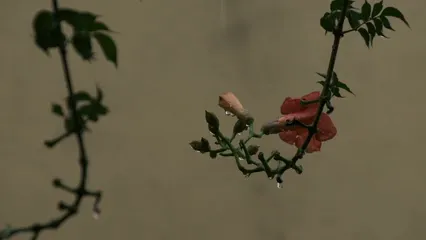
If you’re thinking about enhancing your property’s value, investing in a “The Rain Garden Handbook for Western Washington” will provide you with practical tips and techniques to create a stunning rain garden that your neighbors will envy!
Planning Your Rain Garden
Understanding Local Regulations
Before starting your rain garden project, it’s important to check local regulations. In Illinois, zoning laws may vary by municipality, affecting your garden’s size and location. Some places may require permits, especially if your garden impacts drainage.
To avoid surprises, contact your local authorities or visit their websites. They can provide information on any specific requirements. This step ensures your rain garden will comply with local guidelines, keeping your project hassle-free.
Site Selection
Choosing the right location is crucial for your rain garden’s success. Look for spots that naturally collect rainwater, ideally between property lines. Keep in mind the amount of sunlight your garden will receive. Most plants prefer at least six hours of sun daily.
Examine the soil type as well. Sandy or loamy soils are ideal for water absorption. Also, check drainage; your site should drain well but can hold some water temporarily. Considering these factors helps you create a functional and beautiful rain garden.
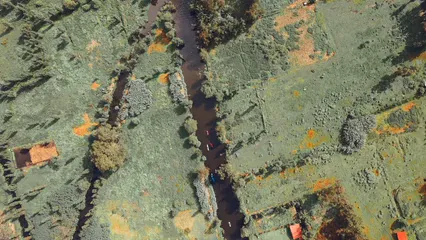
Designing the Rain Garden
Designing your rain garden can be fun and rewarding. Start by choosing shapes that complement your landscape. Crescent, kidney, or teardrop shapes work well and enhance visual appeal.
Aim for a size that allows for adequate water collection, typically around 100 square feet. Use a shallow basin with a depth of about six inches for optimal water retention.
Consider including various native plants for aesthetics and functionality. A thoughtfully designed rain garden not only captures rainwater but also creates a vibrant habitat for local wildlife. To find out more about the best native plants for attracting local wildlife, refer to this article on Best native plants for attracting local wildlife.
While you’re at it, make sure you have the right tools to get started. A 5 Piece Gardening Tools Set is essential for digging, planting, and maintaining your garden—because let’s face it, nobody wants to use a spoon to dig a hole!
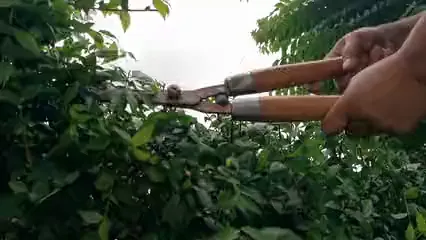
Plant Selection
Choosing Native Plants
Native plants are essential for rain gardens. They thrive in local conditions and require less maintenance. Their deep roots help absorb rainwater effectively, reducing runoff. Some recommended native plants for Illinois rain gardens include:
- Common Ironweed (*Vernonia fasciculata*)
- Blue Flag Iris (*Iris versicolor*)
- Culver’s-root (*Veronicastrum virginicum*)
- Swamp Milkweed (*Asclepias incarnata*)
- Great Blue Lobelia (*Lobelia siphilitica*)
Using these plants not only supports local wildlife but also enhances your garden’s resilience to drought and heavy rains. Deep-rooted varieties, in particular, are excellent for improving soil structure and water retention.

For an excellent guide on choosing the right native plants, consider “The Native Plant Primer: 255 Plants for the New Jersey Gardener”. It’s a treasure trove of information that will help you select plants that will thrive in your rain garden!
Planting Tips
When planting your rain garden, follow these best practices:
- Spacing: Place plants at least 18 inches apart. This allows adequate airflow and room for growth.
- Soil Preparation: Loosen the soil to a depth of at least 12 inches. This promotes healthy root development.
- Mulching: Apply a 2-inch layer of mulch to retain moisture and suppress weeds.
For maintenance, water your plants regularly during their first growing season. Afterward, most native plants will require minimal care. Monitor for weeds, and remove them promptly to ensure your garden thrives.
Construction Process
Step-by-Step Guide
Building a rain garden involves several key steps:
- Planning: Choose a location that captures runoff. Aim for a spot with good sunlight and well-draining soil.
- Site Preparation: Mark the garden’s outline with stakes and string. Dig out the area to a depth of about 6 inches, ensuring the bottom is flat.
- Soil Layering: Use a mix of compost and native soil for the base. This aids in drainage and provides nutrients.
- Ponding Depth: Create a slight dip in the center. This will hold water temporarily during rain events, allowing for effective absorption.
- Planting: Follow your layout, placing plants according to their sunlight and moisture needs.
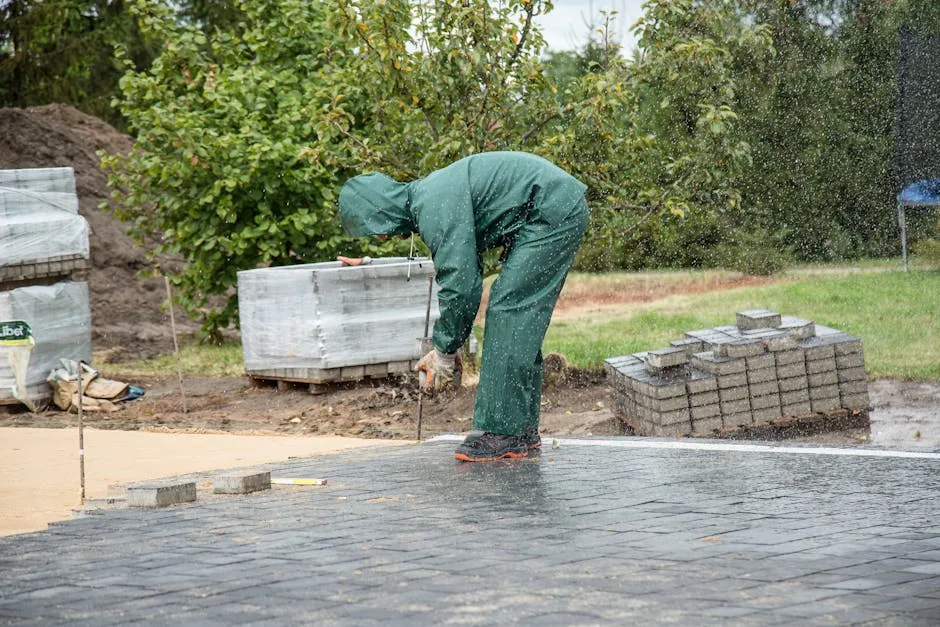
Once your garden is planted, consider adding decorative stones or logs to enhance its appearance. This not only beautifies the space but also helps manage overflow during heavy rains. You can find some stunning 20 lbs River Rock that will add a touch of elegance to your rain garden!
Tools and Materials Needed
To build your rain garden, you’ll need some essential tools and materials. Here’s a handy list to get you started:
- Shovel: For digging and shaping the garden bed.
- Rake: To level the soil and remove debris.
- Trowel: Useful for planting smaller plants.
- Garden hose: To outline the garden’s shape.
- Soil amendments: Such as compost to enhance soil quality.
- Mulch: To retain moisture and reduce weeds.
- Native plants: Select a variety of native species that thrive in Illinois.
For sourcing plants and materials, consider visiting local nurseries or garden centers. Many offer native plants specifically suited for rain gardens. You can also check online marketplaces and local gardening clubs for plant exchanges. If you need some quality organic compost, consider getting 1 Cubic Foot Organic Compost to enrich your soil!
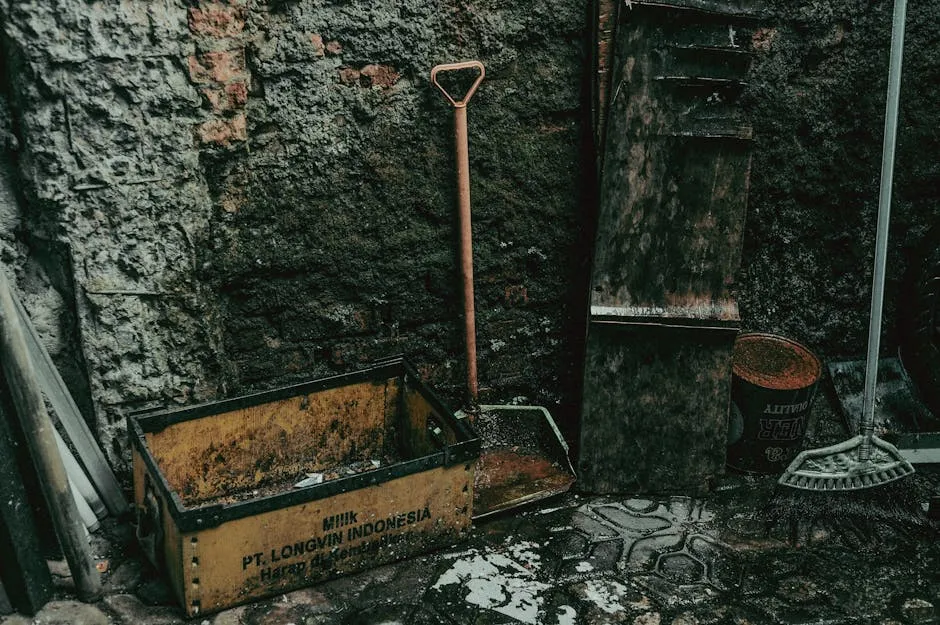
Maintenance and Care
Ongoing Maintenance
Once your rain garden is established, regular care is vital. Start by monitoring for weeds. Early removal helps prevent competition for nutrients. Watering may be necessary during dry spells, especially in the first growing season. Keep an eye on plant health; yellowing leaves can signal issues.
Regularly check for signs of erosion or water pooling. Adjustments might be needed to ensure proper drainage. A well-maintained rain garden not only looks good but functions optimally.
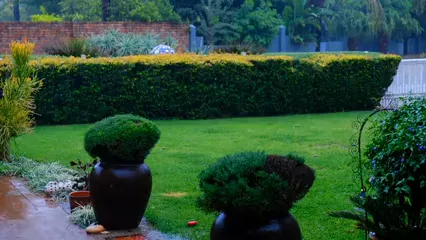
Seasonal Considerations
As seasons change, your rain garden will require different care. In spring, expect new growth. Watch for weeds and remove them promptly. Summer may bring dry spells; ensure adequate watering.
During fall, allow leaves to decompose naturally. They provide nutrients and shelter for wildlife. In winter, monitor water levels. Avoid heavy snow buildup, as it can damage plants. Consider applying a light layer of mulch to protect roots and maintain moisture.
Community Engagement
Collaborating with Neighbors
Building a rain garden can be a community effort. Talk to your neighbors about joining forces. Share ideas, resources, and even costs. Working together fosters a sense of ownership and pride. Plus, it makes maintenance easier.
Community rain gardens can create beautiful shared spaces. They allow everyone to enjoy the benefits while promoting environmental stewardship.

Educating Others
Educating your community about rain gardens is crucial. Host workshops or community events to share knowledge. Create informative flyers or social media posts to spread the word.
Local schools or community centers may also support educational initiatives. Encourage residents to learn about the environmental benefits. This awareness can inspire more rain gardens in your area.
Conclusion
Building rain gardens between property lines in Illinois is essential for managing stormwater. These gardens offer environmental benefits while enhancing community aesthetics. By taking action, you contribute to a healthier ecosystem and improve your neighborhood. Plus, there’s immense personal satisfaction in nurturing such a vibrant space. Let’s work together for a better environment!
FAQs
Please let us know what you think about our content by leaving a comment down below!
Thank you for reading till here 🙂
All images from Pexels



